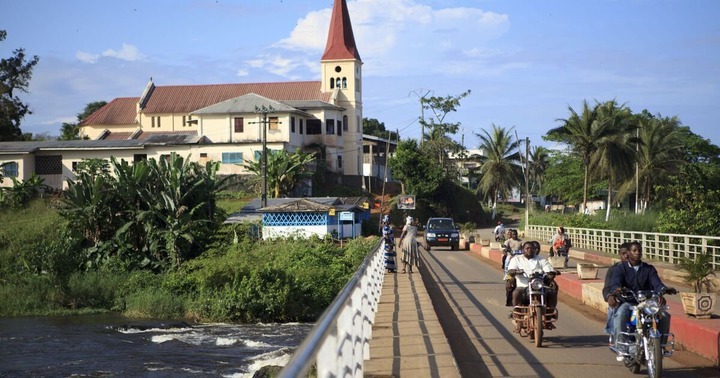A highway project set to connect two of Cameroon’s largest cities has entered its second stage, an enterprise that will end up costing around $1.5 billion (just under £1.2 billion) to build. The highway will connect Yaounde, the capital of Cameroon and home to more than 2.8 million people, with the port city of Douala, which is the biggest city in the country. ...READ THE FULL STORY FROM SOURCE ...READ THE FULL STORY FROM SOURCE
Currently, the journey via road takes just under five hours, across a distance of nearly 148 miles. The infrastructure project is hoped to improve Cameroon’s connectivity to the Democratic Republic of Congo.
Work on the second stage of the Yaounde-Douala highway is now underway.
The section will link Bidodi to Douala over a total length of more than 87 miles, connecting to the existing network. The section will comprise five sections and three slip roads – about 17 miles worth.
Officially launched in 2014, the first phase of the highway was completed in 2021 and is partially open to the public. It took just over seven years to reach completion. Construction of this part of the network included six span bridges, one main line bridge, an interchange, nine channels, 108 box culverts (a concrete structure to manage water and allow traffic as well as livestock to pass under the highway), one mainline toll station, two interchange toll stations and one service area.
The estimated cost of this phase is as much as 337.86 billion XAF, equivalent to over £430 million. A highway of two-by-two lanes, extensible to three, was constructed over about 37 miles to the Bibodi interchange.
According to the World Bank, the cost of the highway is too high compared to other projects of the same type in Africa, The Guardian Post Daily reports.
Funding is being sought from the African Development Bank (AfDB) for a $603.6 million (£463 million) package to pay for the road.
This is the first high-grade highway to be built in Cameroon. The project team had to contend with mountainous and hilly terrain as well as dense forests with swamps, mosquitoes and high incidences of tropical disease, according to ENR.
Design consulting units in countries including China, Cameroon and Denmark collaborated to optimise the route and to ensure that the project would have minimal impacts on the environment. Many elements, such as the toll stations and service areas, incorporate local architecture and cultural aesthetics into their design.
As well as improving communications between the two largest cities, the link will accelerate economic integration throughout the region. This includes the trade corridors to Cameroon’s neighbours. The road is expected to be finished within 36 months.
Cameroon is a country in central Africa, sharing borders with Nigeria to the west and north, Chad to the northeast, the CAR to the east and Equatorial Guinea, Gabon and the Republic of Congo to the south. Its coastline lies on the Bight of Biafra, part of the Gulf of Guinea and the Atlantic Ocean.
It has a population of nearly 31 million people, speaking 250 native languages in addition to the national tongues of English and French, or both. It became a German colony in 1884, but was divided between France and the UK after World War One as per the League of Nations mandate. Independence was granted in January 1960.
It is a member of the African Union, the United Nations, the Commonwealth and the Non-Aligned Movement, founded with the view of advancing the interests of developing countries in the context of Cold War confrontation. Cameroon is a lower-middle-income country with high levels of poverty. In 2024, 23 percent of the population live below the international poverty line of $2.15 (£1.65) per person per day. Poverty is especially high in the rural areas, where 55 percent of the working population lives.…For More READ THE FULL STORY ▶▶




